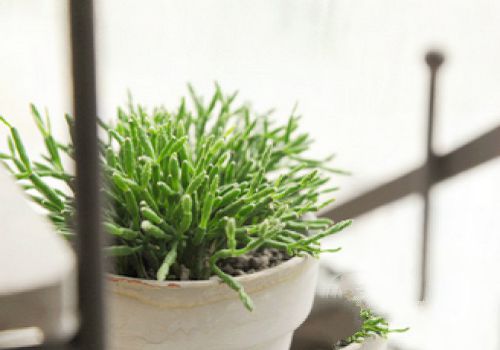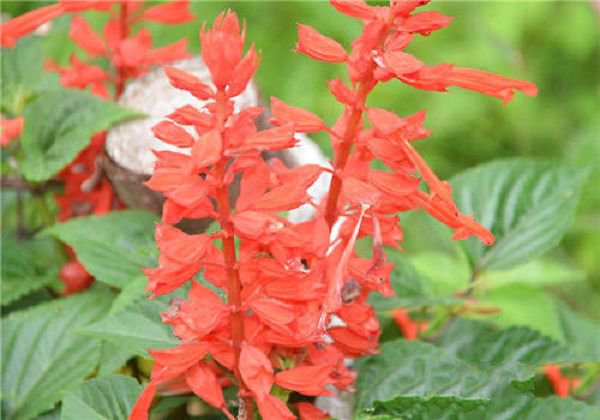Correct pruning methods of flowers and common methods of pruning bonsai
To cut the right position is the most important thing for the pruning of flowers, so that the goal can be achieved. Generally speaking, the pruning position is above the branched node, that is, the bud point, so that the new buds can germinate directly.
Pruning time for flower bonsai pruning should pay attention to time, generally in the growing period for pruning, for flower bonsai after pruning, need to be fertilized.
1. Generally speaking, herbaceous flowers can be pruned at any time.
two。 Deciduous plants are usually pruned when flowers and leaves fall and new buds are about to be pruned. Such as maple, wisteria.
3. Woody plants with seasonal flowering should pay attention to pruning the seasons first. Such as camellias and cuckoos.
4. If it is perennially flowering plants and flowers can be pruned at any time.
Common methods of flower pruning 1. Pick the heart, remove the top bud of the branch, that is, pick the heart. The effect of coring can remove the apical advantage and promote the occurrence of lateral branches.
two。 Sparse pruning is the complete cutting of branches from the base, which is often used to remove excess lateral branches and irregular growth shoots, as well as withered branches, disease and insect branches, thin and weak branches, branches, dense branches and residual branches after anthesis, in order to adjust the plant shape of ornamental plants.
3. The short cut is about to cut off part of the tip of the branch. The species of flowering on the branches of the current year can be cut short in the # season. A lateral branch that promotes a lot of history. For the species that bloom on the biennial branches, the canonical branches can be short after flowering to make them regenerate new branches. For example, the growth potential of geranium and cymbal is weakened after anthesis, and it can be cut short at 2-3 buds at the base of branches.
(4) the curved branch is to change the growth direction and growth state of the branch, so as to achieve the purpose of balancing the branch growth or making the branch distribution reasonable and creating the plant shape. The wooden coffin is bound with ropes.
5. Wiping buds is to remove too many axillary buds, limit the increase in the number of branches, so that nutrients are concentrated to supply the main buds.
6. In addition to buds, some flowers such as dahlia, chrysanthemum, peony and other flower buds form more, and now the buds in the axils of the leaves below the top will be removed.
7. Fruit thinning is that fruit flowers often bear a lot of fruit after fade in early spring. In order to save nutrients, a certain number of deformed fruits and small fruits should be removed after physiological fruit drop in late May.
8. Picking leaves, especially in the late growth season, can be removed at any time when there are yellow leaves, leaves damaged by diseases and insect pests, and redundant leaves covering flowers and fruits.
The branches and leaves of diseases and insect pests of flowers and plants should be trimmed and burned. The branches for diseases and insect pests must be cut off and then burned.
Flowering plants to remove residual flowers for flowering plants should pay attention to remove residual flowers, so as to avoid unnecessary nutritional loss.
Foliage plants can trim old leaves and withered leaves for some foliage plants, if there are old leaves, yellow leaves and withered branches should be pruned.
Common modeling methods of flower bonsai pruning 1. Single-stem type, leaving only one trunk, no branches. Such as the plant shape of the herbaceous plant Dahe cup chrysanthemum, the tree shape of Magnolia magnolia and Ligustrum lucidum in woody plants.
two。 The multi-stem style leaves several main branches, each with a flower at the top, such as Dahlia, multi-headed peony and so on.
3. Through the tillering of the plant itself or multiple coring and pruning, the plant has more lateral branches, and the whole plant is low and clustered, with a large number of flowers, such as extractive flowers, shrubs and flowers.
4. Cliff attachment to flower racks or walls causes the branches of the whole plant to stretch and droop in one direction, often used in small Portuguese varieties or basin flattery.
5. Climbing style is often used for trailing flowers, so that branches are attached to walls or gentlemen grow around hedges. Such as Parthenocissus.
6 creeping type, natural growth on the ground, so that it covers the ground or mountains and rocks, such as brocade, cypress, early golden lotus and so on.
7. Through artificial traction, the scaffold makes the plant cling to a certain shape to form a transparent plum or flower hole. Mostly used for mastiff flowers such as Ziteng and honeysuckle and so on.
8. Ball type, through many times of coring or pruning to form dense side branches, and then short the protruding side branches. Make the whole crown round or oblate, such as big leaf boxwood and dragon cypress, etc.
9. The whole coffin is trimmed or tied into the shape of animals or buildings, such as cypress and juniper, etc. In addition, there are other forms such as umbrella shape, tower shape, cone shape, weeping branch shape, inclined shape, horizontal type, curved stem type and so on.
Related
- What if the leaves of potted flowers turn yellow?
- Florescence Control of several Flowers
- Anti-freezing technology and post-freezing nursing technology of flowers
- What is the classification of flowers? What are the common methods of flower classification?
- Prevention and control of alkali and acid damage of flowers in courtyard
- Technology of Anti-freezing and restoring growth of Flower seedlings in greenhouse and greenhouse
- How does flower fertilization not hurt the root? Fertilization technology of flowers
- Key points of disinfection in flower greenhouse
- Several pesticides that are banned or used cautiously in flowers
- How to fertilize the flowers that watch the leaves?



